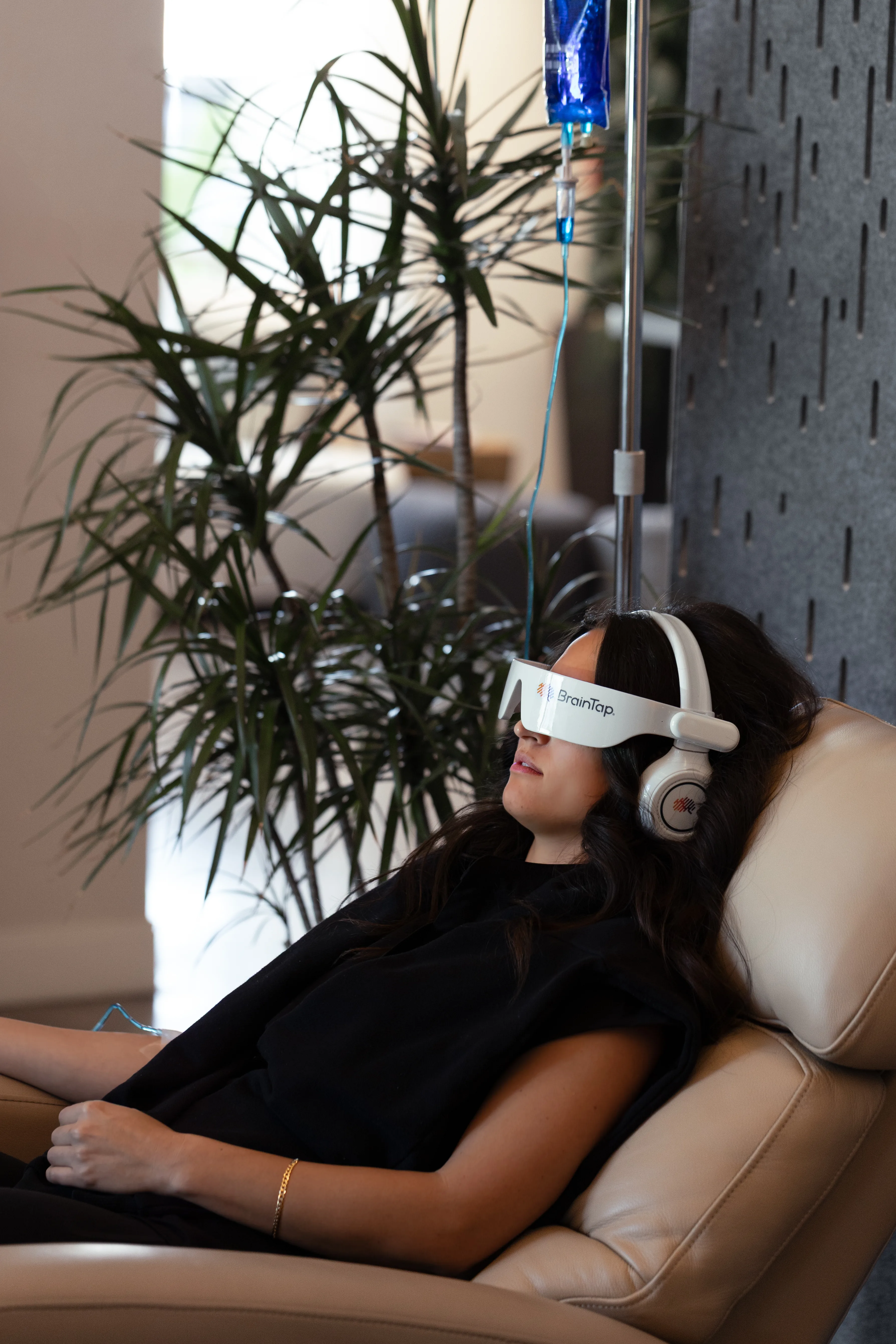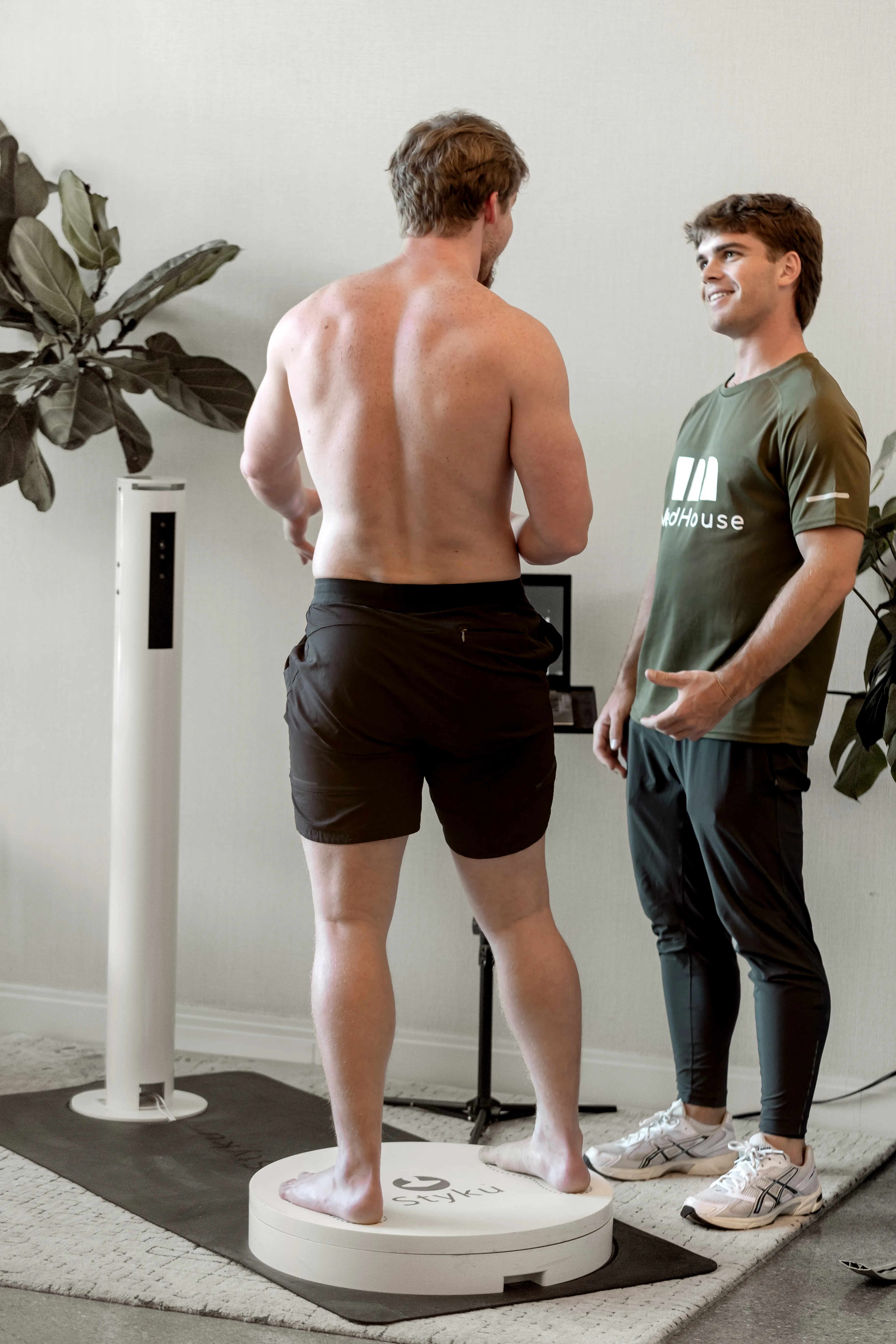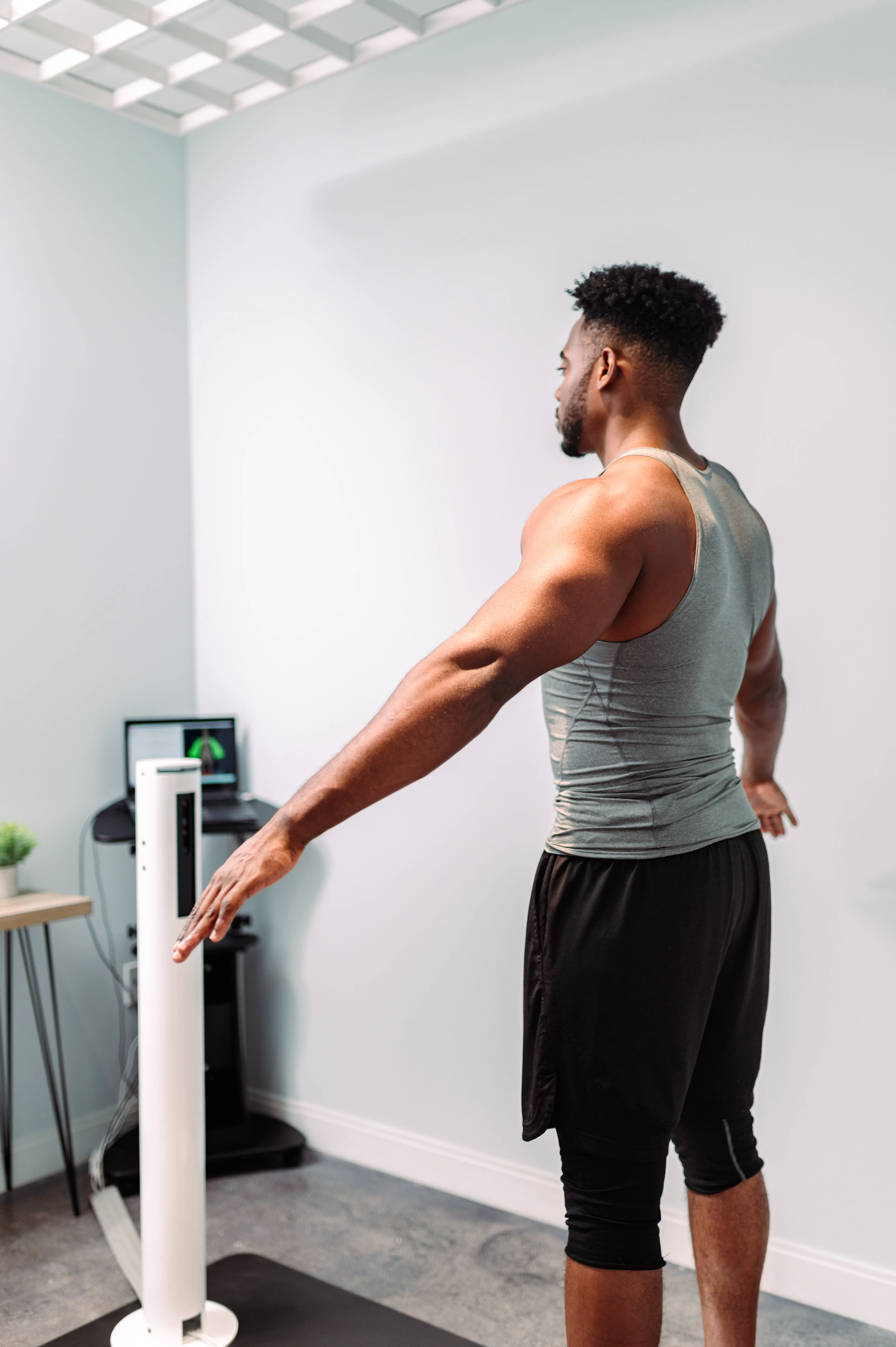Stress isn’t just a feeling—it’s a frequency. And most of us are broadcasting it all day long.
The average brain spends its waking hours in high-beta mode—a brainwave state associated with urgency, worry, and overthinking. It’s necessary for focus and survival, but when it becomes your baseline, it starts to burn through your mental, emotional, and biological reserves.
The result? Poor sleep. Mood swings. Fatigue. Hormonal disruption. And a body that never fully exits “fight or flight.”
BrainTap offers a way out—not with meds or meditation apps, but with a wearable headset that uses light and sound to gently guide your brain back into balance.
This isn’t just about relaxation. It’s about repatterning your brainwave rhythms so your nervous system can finally reset.
Understanding Brainwave Imbalance
Your brain operates on electrical rhythms—measurable patterns known as brainwaves. Each frequency range is linked to different states of consciousness:
- Beta (13–30 Hz): Alert, active thinking
- Alpha (8–12 Hz): Calm focus, creativity
- Theta (4–8 Hz): Deep relaxation, subconscious access
- Delta (0.5–4 Hz): Sleep and physical repair
- Gamma (30–100 Hz): Learning, insight, memory integration
The problem isn’t that beta brainwaves are bad—it’s that we get stuck there. Over time, this imbalance leads to nervous system rigidity and burnout.
BrainTap uses neuro-acoustic entrainment to help the brain shift out of beta and into more regenerative rhythms—on demand.
How BrainTap Rewires Stress
Each BrainTap session uses four layers of technology to rebalance the brain:
- Binaural Beats: Two slightly different frequencies are played into each ear, creating a perceived third tone that guides the brain into a new wave state through a process called frequency following response.
- Isochronic Tones: Pulsing beats that create a rhythmic pattern to reinforce the shift.
- LED Light Therapy: Gentle light pulses delivered through the visor and earphones help stimulate the brain’s visual and auditory centers, deepening entrainment.
- Guided Meditation & Breathwork: Voice tracks guide the mind toward calm while aligning breath patterns—reinforcing vagal tone and parasympathetic activation.
This combination works with—not against—the natural neuroplasticity of the brain. Over time, your nervous system learns how to shift out of stress more easily, even without the headset.
Why It’s Different from Meditation
Traditional mindfulness practices are powerful—but they often require a still, focused mind to begin with. For many people stuck in high-alert beta, trying to meditate just adds another layer of frustration.
BrainTap removes the pressure. It provides a passive, tech-guided shortcut into the same neural states achieved through deep breathwork, float tanks, or extended meditation—in 20 minutes or less.
You don’t have to “do it right.” You just put on the headset, close your eyes, and let your brain follow the rhythm.
The Results
Regular BrainTap users report:
- Sharper focus and clarity
- Decreased anxiety and racing thoughts
- Deeper, more restful sleep
- Emotional balance and resilience
- Faster recovery from overwhelm or overstimulation
Research supports this. Studies show that audio-visual entrainment can improve cognitive performance, reduce stress markers, and increase brainwave flexibility over time.[¹][²]
This isn’t just about relaxing. It’s about rewiring your response to life.
A Tool for Long-Term Brain Health
When used consistently, BrainTap helps:
- Improve HRV and vagal tone, supporting longevity
- Rebalance cortisol rhythms for better sleep-wake cycles
- Support emotional regulation and neuroplasticity
Reinforce healthy habit formation and mindset shifts
In a world that constantly stimulates your brain into reactivity, BrainTap offers a fast, reliable way to come back to yourself—to rewire stress into calm, clarity, and control.
Ready to feel what 20 minutes of true mental clarity and nervous system balance can do? Come try BrainTap at MedHouse. Whether you’re looking to improve sleep, enhance focus, or recover from stress, our team will help you select the right session to meet your goals.
References:
- Huang, T. L., & Charyton, C. (2008). A comprehensive review of the psychological effects of brainwave entrainment. Alternative Therapies in Health and Medicine, 14(5), 38–50.
- Wahbeh, H., et al. (2007). Binaural beat technology in humans: a pilot study to assess psychologic and physiologic effects. The Journal of Alternative and Complementary Medicine, 13(1), 25–32.
- Thomas, N. L., & Siever, D. (1989). The effects of audio-visual stimulation on the EEG and mental functioning. Journal of Neurotherapy, 3(2), 73–84.







